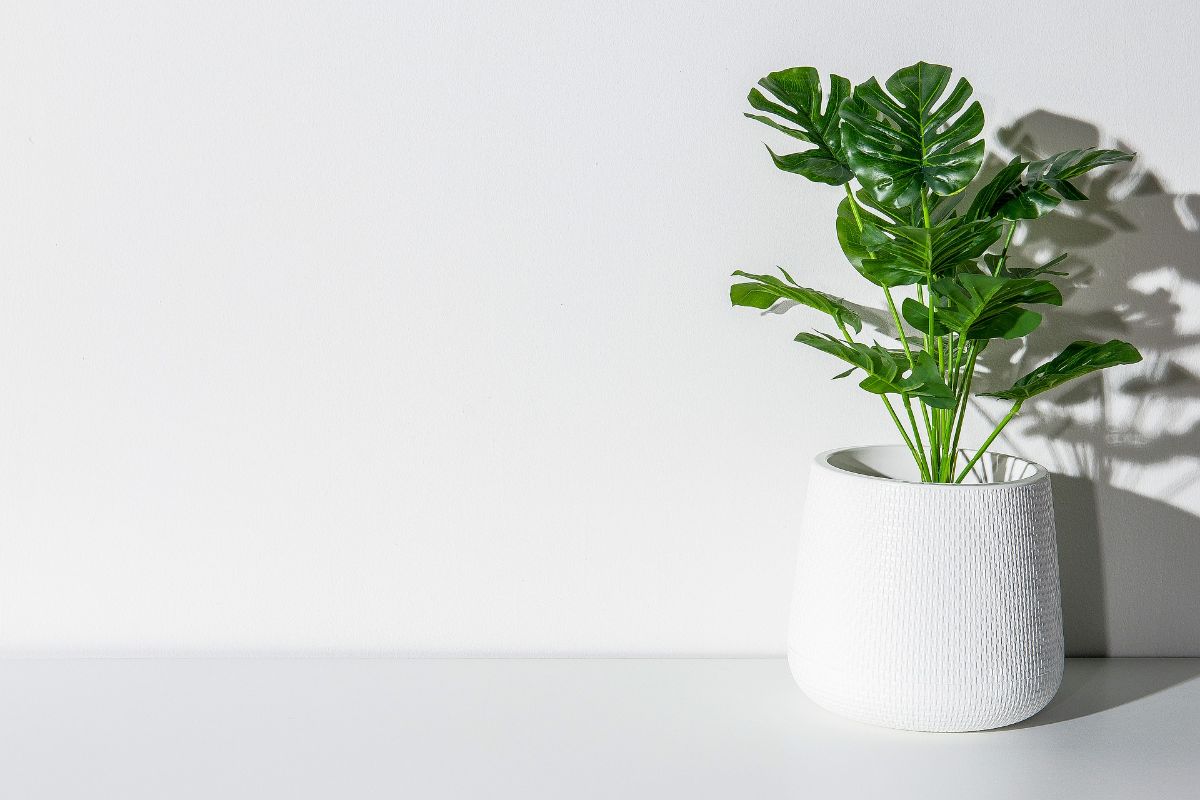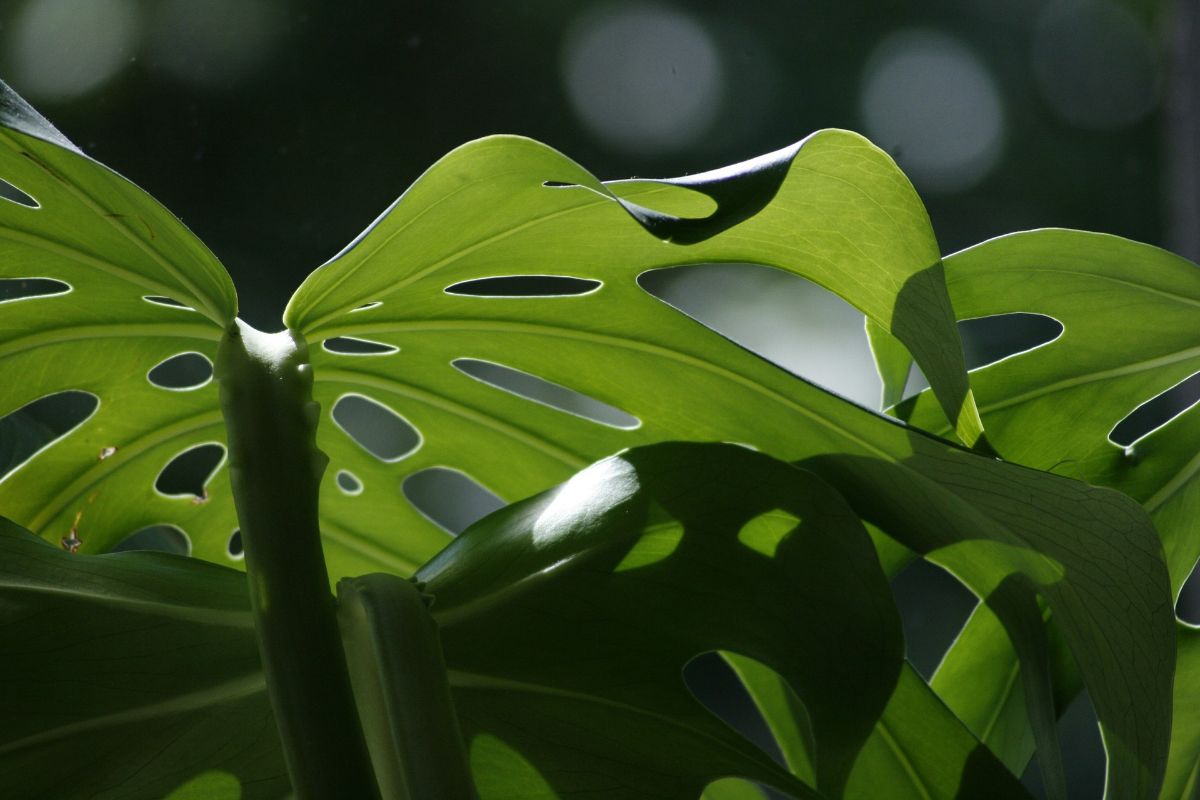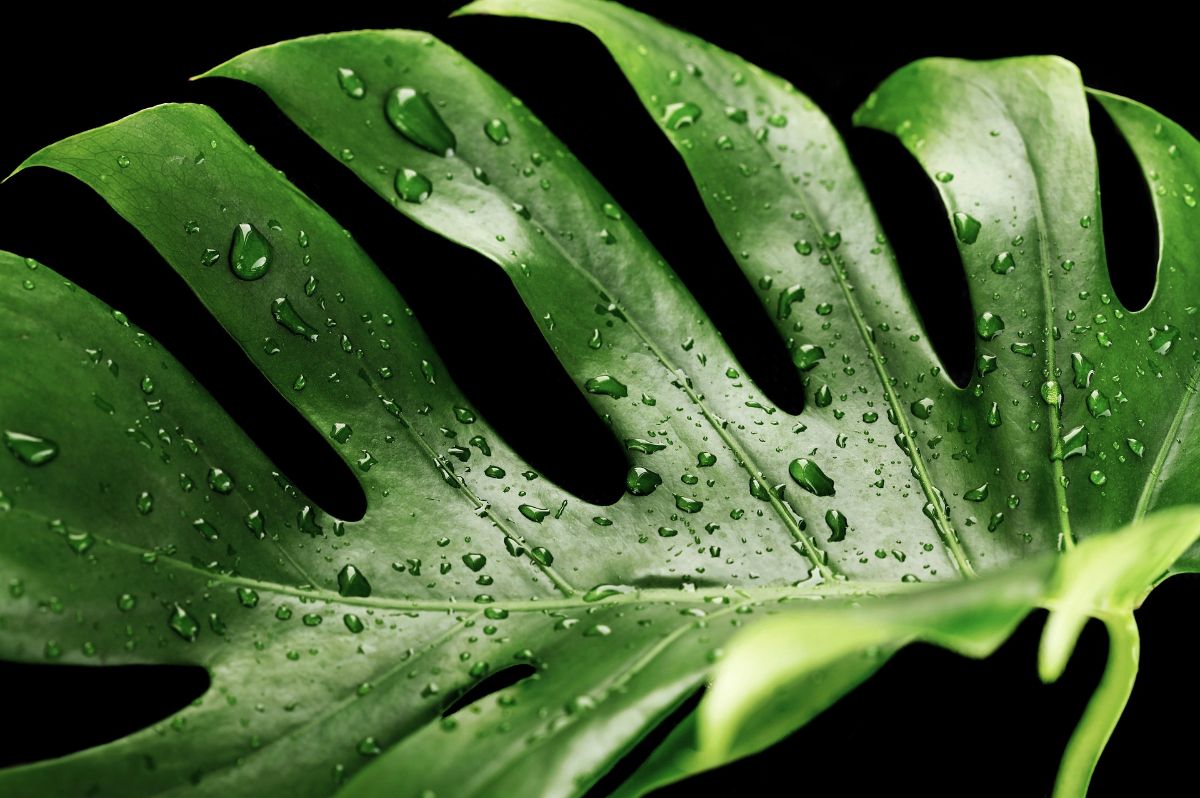
One of the indoor plants that would attract our attention the most in a florist or in the supermarket, would be the Monstera or, also known as Adam's Rib. It is a very showy plant in its leaves, which requires a series of Monstera care very easy to apply so that it survives for a long time.
But what are those cares? Is it really that easy to maintain? If you are considering having a Monstera or have already been given it or have bought it, we want to help you know what care you should give it.
These are the cares of the Monstera
The first thing you should take into account about the Monstera are its characteristics, that is, how it is. It is a plant that was originally outdoors; However, due to its strength, it can be perfectly adapted to the interior, but for this you need some rules. It is large, and with dark green leaves. The most striking thing about the plant, which by the way needs a tutor or guide to be able to support itself, otherwise its branches would fall, is that the leaves appear as "food". Actually, it does not mean that there is a "bug" doing its thing, but that is the case. Which is why they nicknamed it "Adam's Rib," because it's like it's missing parts.
Now, what is the care of the Monstera? We talk about each one of them.
Location
The original Monstera, that is, where it comes from, is from the tropical jungles of Mexico. Those jungles are full of trees that are much larger than this plant, which means that it receives only part of the sunlight, but never directly.
That is what you have to provide; a bright place that is not sunny because if the sun's rays fall on it, it can cause its leaves to end up burned and that weakens the plant.
The best place for the Monstera is, without a doubt, a place where you have light but it is not necessary to place it next to the window to get the sun or anything like that. Now, you must watch that the leaves do not begin to lose their characteristic color, since it could be an indicator of lack of light.
Is the Monstera indoor or outdoor?

As we have told you before, at the beginning Monstera was an outdoor plant; but little by little it has been introduced into homes. Actually, all the plants are outdoors, only that we have adapted them to live under certain conditions and, in the case of the care of the Monstera, this is what has happened.
So you can place it interchangeably indoors or outdoors as long as you satisfy its needs in both locations.
How to water the Monstera

Irrigation is one of the trickiest care of the Monstera, because it is really the one with which it can get sick, either because you go over watering, or because you do not give it enough.
If we think about their natural habitat, you must bear in mind that in the jungles it rains a lot and there is also high humidity. But since it is small, there are other plants that catch rainwater before it does, and that implies that what reaches it is little. So we could say that what he "drinks" from is the humidity of the environment.
Therefore, if you can place it in a place where it gets damp from humidity, much better. That implies that it is out of places where there are air conditioners or heaters because they dry out the environment.
Regarding irrigation, we recommend that, in summer, you do it twice a week (three if you are in the Mediterranean area or it is very hot); while, in winter, with once a week you will have plenty.
Of course, you should try to spray it several times a day to give it moisture, especially if you live in a dry climate.
What to do if you have yellow leaves
Have you seen a Monstera that has yellow leaves? Be very careful! That sign indicates in the vast majority of cases that you have gone overboard with the water. And the problem is that, if you do not put a remedy, you can cause the roots to rot and, with it, not absorb the nutrients it needs to live, getting sick and, unfortunately, dying.
But don't worry, there is a solution. What you should do is stop with watering. Let it rest for a while and don't water it until you see that the soil is dry. If you live in an area where it is very hot, instead of watering it, start spraying the leaves with water and that's it. But don't do it very often either.
Temperature
Monstera is one of the indoor plants that tolerates cold very well. It is capable of holding up to 0 degrees, although it does not like having to do it constantly. In a house it is very rare that this temperature is reached, but that gives you an idea of whether you can place it somewhere further away from heating.
The flowers, that 'gift' if you comply with the care of the Monstera

Did you know that Monstera can flourish? You are right! In addition to the large leaves and as foods it has, one day you may find some beautiful flowers. Now, we have a problem.
And is that as a houseplant it is very difficult to get a Monstera to flower. I would only do it outside. And, in addition, we must add another thing, and that is that it will not flourish until 3 years.
Does that mean you will never see her flowers? No. There are some that, due to the conditions that are given inside, seem to react and flourish, but we already warned you that it is very, very difficult to achieve it because you would have to copy their natural habitat to achieve it.
Fertilizer
Monstera is a very resistant and strong plant, but from time to time it needs a "kick" of energy. This is achieved through the subscriber, which can be in liquid form or in another format.
And when to do it? We recommend that you do when spring begins and during summer. Do it once a month at first, and depending on how you react, you can increase it to once every fifteen days.
How to transplant a Monstera
For your Monstera to remain healthy and spectacular, you must bear in mind that, every two years, you have to transplant it into a larger pot. To do this, you must use a substrate for green plants that is quite draining, so that the water does not puddle the roots in the ground. So you can make a mixture of substrate with perlite and you will have solved the problem.
The time to transplant is in late winter or early spring.
When and how to train a Monstera
As we have already told you, the Monstera needs a tutor or guide to be able to hold the branches and that it does not fall to the ground. As a good climbing plant it is, it will require good support through a tutor. You can do this yourself or you can buy it in stores. It is placed in the pot the moment you see that the branches or stems of the plant begin to bend by its weight to help it start to grow vertically, and not horizontally.
Now that you see how easy it is to care for the Monstera, do you dare to have one in your home?